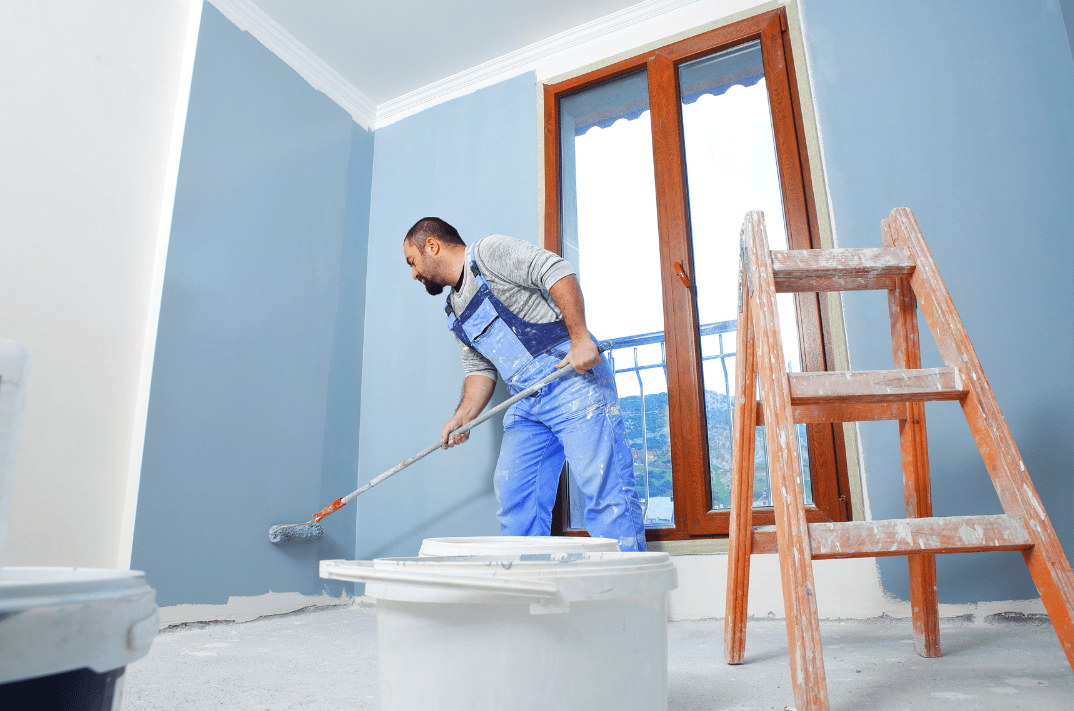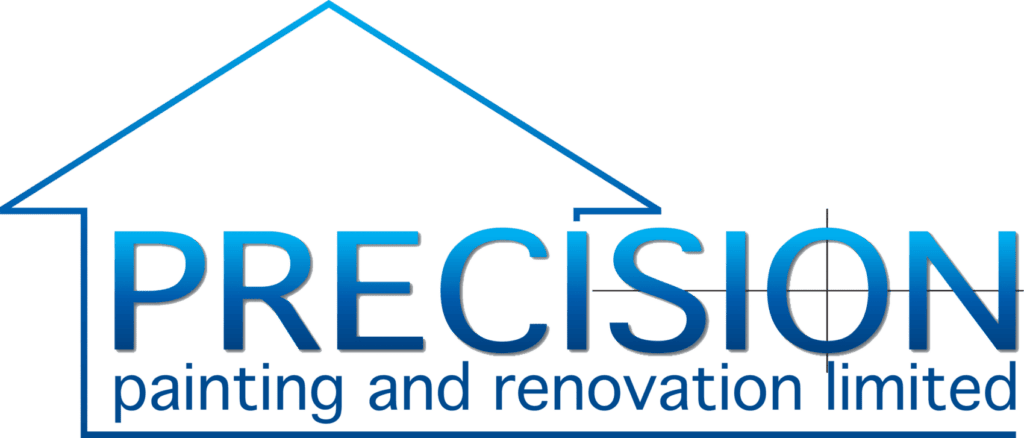Creating a nursery is more than just a decorative project—it’s about building a haven for growth, safety, and emotional comfort. Choosing a painting service for your nursery requires careful consideration of the products used, especially with the health of infants and toddlers at stake. That’s why safe, non-toxic paint is not a luxury but a necessity. Every brushstroke matters when it comes to crafting a space that nurtures your child’s development without exposing them to harmful substances. A professional painting service that prioritizes safety, clean execution, and odorless, VOC-free materials can make a significant difference in your project.

Why Safe, Non-Toxic Paint is Non-Negotiable for Nurseries?
When painting a nursery, the impact of indoor air quality becomes paramount. Standard paints contain volatile organic compounds (VOCs), which release chemicals into the air during and after application. These airborne pollutants have been linked to respiratory issues, skin irritation, and even long-term developmental concerns in children.
Non-toxic paint formulations are crafted to eliminate these dangers. They contain minimal to zero VOCs, are water-based, and often come with certifications verifying their safety for indoor environments. When applied by an expert painting service, these paints maintain their integrity and effectiveness while keeping your child’s well-being at the forefront.
Choosing the Right Color Palette for Emotional Comfort
Color psychology plays an important role in early development. The nursery should be a calm, soothing environment that promotes rest, emotional security, and subtle stimulation. While the choice of color is personal, professionals often recommend soft hues such as:
-
Pastel blues: Calming and linked with better sleep patterns
-
Muted greens: Refreshing, with natural, earthy energy
-
Soft yellows: Uplifting without being overwhelming
-
Lavenders and blush pinks: Gentle and comforting
Avoid overly bright or primary colors in large doses, as they may overstimulate infants. A professional painting service helps balance visual appeal with sensory wellness, ensuring harmony in design.
What to Look for in a Nursery Paint?
When narrowing down safe paint options for nursery walls, trim, and ceilings, always inspect product specifications. Look for the following features:
-
Zero VOCs (Volatile Organic Compounds)
-
Water-based formulation
-
Odor-free or low-odor
-
Free from heavy metals and solvents
-
Mold and mildew-resistant
-
Certified by third parties (e.g., Green Seal, GREENGUARD)
These factors not only ensure the air remains clean but also help prevent allergic reactions and long-term toxicity buildup within the home.
The Application Process: Clean, Safe, and Efficient
Hiring a professional painting service ensures that the process from prep to final finish is handled with attention to safety and cleanliness. Here’s what the process typically involves:
-
Site preparation – Covering all furniture, floors, and vents with protective materials
-
Surface cleaning and sanding – Removing dust, oils, and contaminants
-
Priming with safe primers – Using water-based or low-odor primers for better adhesion
-
Multiple thin coats – Ensuring even coverage with safe paint
-
Proper ventilation – Using air circulators or fans to reduce drying time and odor
-
Final inspection – Verifying consistency, touch-ups, and clean-up
Each phase contributes to a polished and hazard-free finish, making your nursery both beautiful and safe.
Common Concerns Parents Have — Addressed
Parents often approach painting with specific fears or hesitations. Here’s how a trusted painting service addresses them:
1. Is it safe to paint while pregnant or with a newborn at home?
Non-toxic paints significantly reduce the risk of exposure. Still, it’s best to leave the house during application and let the space cure for 48–72 hours.
2. What if the paint has a smell?
Low-odor, non-toxic paints ensure that lingering smells are minimized. Professionals use fans and airflow methods to further speed up the dissipation.
3. Will the paint resist stains and wear?
Modern non-toxic formulations are as durable and washable as conventional paints, offering both safety and longevity.
Ideal Surfaces for Nursery Painting
Different nursery elements can be painted safely when non-toxic materials are used. Professional painters help determine the best products and finishes based on surface type:
-
Walls and ceilings: Matte or eggshell finish for soft texture
-
Trim and molding: Semi-gloss for easier cleaning
-
Furniture: Water-based enamel suitable for cribs, dressers, and shelves
-
Doors and handles: Durable satin or semi-gloss options
Ensuring every surface uses compatible and child-safe paint protects against chipping, ingestion, and skin contact risks.
Key Benefits of Non-Toxic Nursery Painting
Choosing a non-toxic nursery painting approach delivers peace of mind. These are the most important benefits:
-
Cleaner air for better sleep and health
-
No exposure to harmful solvents or off-gassing
-
Environmentally responsible choice
-
Quick curing and lower odor
-
Improved bonding with safer primers
-
Minimal allergenic response
Your child spends most of their early years indoors. Ensuring a safe environment supports physical and cognitive growth during this crucial phase.
Essential Safety Standards for Nursery Paint Products
When evaluating paint, look for these globally respected certifications:
-
GREENGUARD Gold Certification – Verifies paint emissions are within child-safe levels
-
Green Seal Certification – Indicates environmentally responsible product formulation
-
ASTM D-4236 Labeling – Ensures the paint has been tested for toxicity
-
EN71-3 Compliance – European toy safety standard applicable to furniture paint
-
US EPA Safer Choice – Government-endorsed non-toxic product label
Professionals align their product sourcing with these standards to meet or exceed regulatory expectations.
Maintenance Tips After Nursery Painting
Even the safest nursery painting job requires proper maintenance to preserve its quality. A few easy practices include:
-
Wipe with a damp cloth – Remove smudges or marks without harsh chemicals
-
Avoid abrasive cleaners – Stick to mild soap solutions
-
Keep humidity low – Prevent mold growth and paint peeling
-
Touch-up as needed – Maintain a fresh and clean look through occasional refinishing
When you hire a dedicated painting service, they usually provide touch-up advice and long-term maintenance recommendations suited to the paint used.
What Sets a Nursery Painting Project Apart?
Painting a nursery isn’t the same as painting a guest room or office. These projects demand:
-
Precision masking and prep work
-
Child-safe paint selection
-
Reduced drying time
-
Odor-neutralized environment
-
Spotless execution
Parents often prioritize timelines, especially close to a baby’s due date. Experienced professionals help schedule work to ensure the space is ready well in advance, with no lingering fumes or residue.
Signs You Need a Nursery Repaint
Repainting a nursery isn’t just cosmetic—it can be necessary to maintain health and hygiene. Watch for these signs:
-
Cracking or peeling paint
-
Visible stains that don’t clean off
-
Mold or water damage on the walls
-
Lingering musty smell
-
Outdated or overstimulating color schemes
A professional inspection helps assess whether it’s time for a refresh, often offering safer and more modern finishes during repaint projects.
Safe Painting for Themed Nurseries and Accent Walls
Want a storybook look or jungle-themed room? Non-toxic paint works just as well with murals, stencils, and accent features. Specialty finishes like chalkboard paint or magnetic walls are also available in non-toxic variants.
Creative themes still require safety-first materials. Experienced painting service providers plan custom designs without compromising health, using approved brushes, safe solvents, and non-allergenic additives.
Checklist: Planning Your Nursery Painting
Here’s a quick checklist to simplify planning:
- Choose a non-toxic paint brand with certification
- Decide on a soothing, age-appropriate color palette
- Schedule painting well before your baby arrives
- Ensure good ventilation during and after application
- Hire a professional painting service to handle the entire process
- Request written documentation on paint ingredients and safety standards
- Inspect finished work thoroughly before setting up nursery furniture
This proactive approach protects your child and ensures long-lasting results.
Why Choose Precision Painting?
Precision Painting approaches every nursery painting project with meticulous care. Our team prioritizes the health and safety of your family by using only certified non-toxic, low-odor, and VOC-free paints. Each step of the painting process is carried out with an eye for detail, from clean preparation to flawless finishing. We understand the unique needs of parents preparing for a new arrival and work with timelines that fit your schedule. Whether it’s a pastel haven or a storybook-themed room, we make sure the space reflects warmth, safety, and quality craftsmanship.
With Precision Painting, every brushstroke brings peace of mind.

